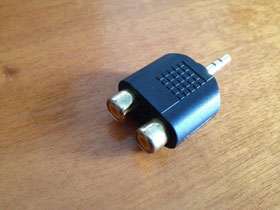Soundbeam uses by default your device’s built in microphone. However, you can analyze audio coming from other audio sources that are connected on your device’s mini jack input. For example, you can connect your handsfree. Soundbeam’s interface will display that a “cable” is connected and will analyze the source. When you unplug your handsfree, the app will switch back to the built in mic.
You can also connect an electric guitar or an external mic but you have to use an adapter first. One solution would be to use a high quality commercial adaptor like iRig. Another cheaper way would be to build your own adaptor using the following materials:














